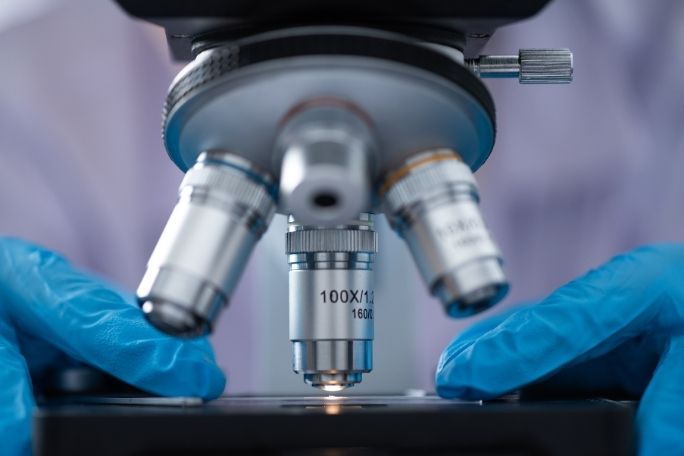Lesson summary
Students will learn about how bloodstains are analysed.
Learning intentions:
Students will...
- understand what a bloodstain is
- understand how bloodstains are analysed.
Success criteria:
Students can...
- explain what a bloodstain is
- analyse bloodstains.
Lesson guides and printables
Lesson details
21st Century Skills
This lesson is designed to build students’ competencies in the following skills:
- communication
- critical thinking
- collaboration
- problem solving
- ethical understanding.
Curriculum Mapping
Australian Curriculum content descriptions (v9):
Year 10 Science:
- investigate how advances in technologies enable advances in science, and how science has contributed to developments in technologies and engineering (AC9S10H02)
- examine how the values and needs of society influence the focus of scientific research (AC9S10H04)
Syllabus outcomes: SC5-12ES, SC5-13ES
General capabilities: Critical and creative thinking, Ethical Understanding, Literacy
Relevant parts of Year 10 achievement standards: Students analyse the relationship between science, technologies and engineering. They analyse the key factors that influence interactions between science and society.
This lesson is part of the wider unit of work: Real-life CSI – Secondary
Time required: 65 mins
Level of teacher scaffolding: High – there is likely to be quite a lot of explanation needed, as well as students requiring assistance during the practical part of the lesson
Resources Required
These materials are per group. Suggested group size of two to three students.
Experiment 1: Release height
- graph paper
- measures: 30cm and 100cm rule
- newspaper
- pencil
- pipette or bottle with eye-dropper (something that will accurately deliver one drop of fluid with a consistent volume)
- plain paper (to make label sheets)
- stand and clamp – something to attach the pipette or bottle holding the synthetic blood.
- synthetic blood (see https://www.scribd.com/document/156835304/FSB06 for recipes).
Experiment 2: Impact surface
- graph paper
- pencil
- materials with different surfaces. E.g., cardboard, plastic bag, ceramic tile, carpet square, paper towel, wood, newspaper, metal, clothing (socks, jeans, T-shirt, etc.)
- measures: 30cm and 100cm ruler
- pipette or bottle with eyedropper
- stand and clamp
- synthetic blood (see https://www.scribd.com/document/156835304/FSB06 for recipes).
Experiment 3: Direction of travel
- 30cm rulers
- pencils
- plain paper to make copies of:
- Sheet A: A prepared sheet of bloodstains with information about how the bloodstains were created
- dip a toothbrush in the simulated blood and fling droplets from the toothbrush as your arm moves across the paper in a definite direction, e.g. R→ L
- label the paper with a general description of the action. E.g. R→ L direction, with the angle changing from shoulder to paper level
- Sheet B: A prepared sheet of bloodstains with NO information about how the bloodstains were created
- dip the toothbrush in the simulated blood
- place your elbow on the table, and, using a protractor, position your arm at a predetermined angle, eg 45 degrees.
- keeping the arm at the measured angle, fling droplets off the toothbrush as your arm moves across the paper, e.g. R→ L
- do not provide a description of your actions, but make sure you record them for later
- Sheet A: A prepared sheet of bloodstains with information about how the bloodstains were created
- synthetic blood (see https://www.scribd.com/document/156835304/FSB06 for recipes)
- Student Worksheets (one per group)
- toothbrush.
Additional Info
This is an original Cool+ lesson.


Welcome back!
Don't have an account yet?
Log in with:
By signing up to Cool.org you consent and agree to Cool's privacy policy to
store, manage and process your personal information. To read more, please see
our privacy policy here(Opens in new tab).
Create your free Cool.org account.
Many of our resources are free, with an option to upgrade to Cool+ for premium content.
Already have an account?
Sign up with:
By signing up to Cool.org you consent and agree to Cool's privacy policy to
store, manage and process your personal information. To read more, please see
our privacy policy here(Opens in new tab).